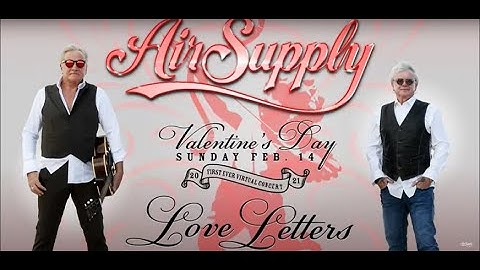Director: Paul Thomas Anderson | Producers: JoAnne Sellar, Daniel Lupi, Paul Thomas Anderson | Writer: Paul Thomas Anderson | Starring: Adam Sandler, Emily Watson, Philip Seymour Hoffman, Luiz Guzmán, Mary Lynn Rajskub | Music: Jon Brion | Cinematography: Robert Elswit | Editor: Leslie Jones Barry Egan (Adam Sandler) owns a warehouse which manufactures and sells novelty goods – toilet plungers with supposedly non-breakable handles and so on – but channels all of his hopes into one venture: having carried out his research diligently, and as far as the vagaries of the promotion will allow, he has come to understand that by purchasing gross quantities of Healthy Choice pudding, he will be able to amass as many as a million frequent flyer miles at a vastly favourable cost. He sits alone in an empty corner of his warehouse, and drawn out into the street and the early morning light, witnesses a car crash before a cab drops off an unexplained harmonium. This harmonium seems to symbolise both the hollow in Barry’s heart, and the possibility for replenishment. He has seven sisters, teasing and overbearing, and is prone to violent thrusts of frustration. But fate keeps bringing him together with Lena Leonard (Emily Watson), a coworker of his sister Elizabeth (Mary Lynn Rajskub), and sharing an impulsive empathy for one another, he follows Lena to Hawaii and they consummate their fledgling romance. Only one thing stands in their way: lonely Barry has previously called a sex line, just to talk, but they are now extorting him for money, in an operation led by a raucous mattress salesman (Philip Seymour Hoffman). After Magnolia (1999), Paul Thomas Anderson determined to make a 90-minute romantic comedy, and he wanted Adam Sandler for the lead role. But beyond the genre and the casting, the long twelve-minute opening sequence of Punch-Drunk Love establishes that this is a daring and experimental film, which shares at least as much with Eraserhead (1977) or Synecdoche, New York (2008) as it does with The Wedding Singer (1998) or Big Daddy (1999). Jarring, enveloping electroacoustic sounds throb and hum and segue into orchestral swells, with prominent use of the harmonium in a score composed during filming by Jon Brion. Coloured abstractions – starscapes, unfurling flowers, cloud patterns, blocks and barriers – provide suggestive interludes, created by the artist Jeremy Blake. And Anderson draws from a wealth of classic cinema – Charles Laughton’s The Night of the Hunter (1955), the French New Wave, Robert Altman‘s Popeye (1980) – alongside his own imagination to conjure virtuosic shots, as when Barry and Lena kiss between passing throngs in a hotel in Honolulu. This visceral film receives a subtle performance from Sandler, whose acting tends to be imparted with innocence and humanity, even in some of those roles where he is accused of bullying, or in the majority where he is perceived as too silly. Emily Watson, who has made her career in challenging parts with the world’s greatest directors, makes Lena more than Barry’s match: while we know less of her background, she displays a fierce understanding and an intense longing, somehow certain that she has found her man. And the scenes towards the climax of Punch-Drunk Love, where Sandler’s Barry and Hoffman’s mattress salesman Dean finally talk and then meet, are moments of hilarious, uproarious release. Punch-Drunk Love is a constant surprise and delight. It is one of cinema’s most acute and emotional portrayals of desperation, of psychic confusion, and of the tender clasp and jubilant onrush of love. Chaos defines Barry Egan’s universe in Punch-Drunk Love, reaching out across every aspect of his environment to diminish his lonely, meek existence. This isn’t world-building in the traditional sense, given that the term is typically confined to high-concept science-fiction films or epic fantasies spanning multiple hours. But what Paul Thomas Anderson accomplishes here in colliding multiple threads of Barry’s life into single moments of pandemonium fits the definition nonetheless, carefully seeking out the presence of some governing logic explaining the assortment of random puzzle pieces that don’t initially seem to fit together. He runs a struggling small business selling plungers out of a warehouse. A phone sex operator and her boss, the ‘Mattress Man’, are extorting him for money. Puddings stack up in his office after he discovers a loophole in a frequent flyer promotion. This isn’t to mention the constant harassment of his seven sisters chastising him for one thing or another. Where is the sense in any of this? The hope that we might receive answers is conjured in a pair of entrances just as random as everything else in his life. Nothing can explain the sudden, violent car crash in the opening minutes that is immediately followed by a van unexpectedly dropping off a harmonium at the kerb. As its name suggests, this instrument will soon help Barry find harmony among the dissonance, though for now it remains just as much an unexplained mystery as Lena, the woman who later that day walks into his work and encourages him to pick it up off the street. Just as the harmonium arrives in a red vehicle, so too is Lena dressed in similarly coloured outfits, radiating a vibrant warmth that continues to echo through Punch-Drunk Love’s otherwise cool hues.  To start discussing the specific palettes that emerge in Anderson’s mise-en-scène though is a slippery slope into lengthy essays on the depths and potency of its symbolism. Punch-Drunk Love stands proudly alongside Krzysztof Kieslowski’s Three Colours trilogy and Jacques Demy’s pastel-hued musicals as an exhibition of one of the most formally rigid uses of colour committed to film, even if Anderson lands his vividity with a subtler visual impact. While we learn from others that Barry’s blue suit is a new addition to his wardrobe, for us it is virtually synonymous with his character, encasing him in the same melancholy shade of cobalt as the walls of his large warehouse where he is frequently shot as a distant, lonely figure. Indeed, blue seems to follow him everywhere he goes, from the glow of street lamps outside to the pale sky that often dominates Anderson’s elegantly framed exteriors.   As Lena gradually inserts herself into Barry’s life though, her pinks and reds begin to mix in with his side of the colour spectrum, offering a vibrant contrast that ties through virtually every scene. When he first takes in the harmonium and begins to play around on it, Anderson slowly zooms into a close-up from a low angle, and curiously begins to shed a warm, romantic light on his face that visually ties it to Lena. Much like his blossoming love life, he doesn’t know how to play or use it yet, but he knows that whenever he feels as if he is losing control, it will be there to bring him joy and comfort. At a certain point, he even adopts a red tie to go with his blue suit, embracing that striking palette as part of his own outward appearance.   Perhaps the most formally brilliant use of this colour scheme emerges in the pink and blue lens flares that Anderson flashes up on the screen from time to time, ethereally capturing the film’s wistful and romantic qualities in a perfect tonal balance. When emotions swell to beautiful heights that the lens flares alone can’t capture though, Punch-Drunk Love sinks into vibrantly abstract interludes, hypnotically swirling its two dominant hues around in fluid watercolour patterns exquisitely designed by digital artist Jeremy Blake. Such dazzling visual displays as these are used sparingly throughout the film, but their consistency delivers a formal impact that sees each chapter of Barry’s personal journey culminate in a pure expression of his most passionate feelings.    The duality of chaos and romance that reverberates through Anderson’s narrative and mise-en-scène continues to manifest in Jon Brion’s eccentric musical score as well, with absolute anarchy layering Barry’s world in an eclectic, tactile dissonance. The sound of duct tape, buzzsaws, and combs unusually combine with syncopated percussion, digital synths, and a prepared piano that has had its strings physically altered with small objects, and the result is an incredibly unusual, polyrhythmic texture that never quite moves in the direction one expects. Just as the messy threads of Barry’s life fight for dominance, so too do these instruments drown each other out, at times even threatening the sound mix of the dialogue. Much like the wild musical experimentations by John Cage which influenced Brion’s score though, it all fits together in an offbeat way. When set next to the romantic waltz of flutes and strings attached to Lena’s gentle presence, suddenly everything feels as if it is all falling into beautiful harmony, drawing together all of Barry’s dreams and difficulties into a single, enchanting motif.   In this way, there is a balanced coordination across every level of Anderson’s filmmaking, each one pushing Barry’s development towards the realisation that through love he can overcome the disorder and violence of an unruly world. From the director’s perspective though, randomness is simply an illusion created through precise arrangement of every cinematic element into superbly executed non-sequiturs. One conversation between Barry and Lena is perfectly punctuated by a forklift accident in the background, landing a punchline with brilliant comedic timing, while even within the dialogue itself, it isn’t uncommon for topics to jarringly switch from one line to the next like a confused, distracted poem.  Casting Adam Sandler in the buffoonish role of Barry is an incredibly inspired move here, as Anderson isn’t just playing to his actor’s comic talents, but specifically the cultural icon that Sandler embodies. The awkward, emotionally stunted loner character takes on new dramatic dimensions in Punch-Drunk Love that few other romantic comedies have addressed with such self-awareness, as in this tightly composed narrative Anderson offers a sharper insight into the sources of the archetype’s crippling anxiety, as well as the process of developing a confidence that emanates outwards.  It is only when Barry stops passively accepting Lena’s affection and actively pursues her as a romantic interest that he discovers a willingness to take responsibility for his own actions, leading to his brave retaliation against the Mattress Man’s goons when she is caught up in their attack. In that moment, it almost looks as if a new man is born, willing to put himself out into a dangerous world to protect something other than his own ego. When he finally comes up against the Mattress Man himself, played by Philip Seymour Hoffman as a hilariously volatile shopkeeper, he is virtually unstoppable, conquering the chaos of the world through the sheer power of self-belief. “I have a love in my life that makes me stronger than anything you can imagine.” The camerawork which once moved in jumpy, handheld tracking shots now moves with relaxed, decisive resolve, and even the harmonium which Barry could previously only draw out a few disjointed notes from now fluently accompanies Lena’s romantic waltz theme. Perhaps the most singularly affecting visual representation of his newfound peace though emerges in what might be Punch-Drunk Love’s most memorable frame, silhouetting his kiss with Lena in an open doorway against a sunny Hawaiian beach, while a faceless crowd moves past them in both directions. Gradually, the frenzy dissipates, and yet the two lovers remain rooted in position, united by their sincere, selfless love. In that glorious, blissful moment, everything fighting for Barry’s attention sinks away, and there is finally only one thing in the entire, senseless universe that really matters. |

กระทู้ที่เกี่ยวข้อง
การโฆษณา
ข่าวล่าสุด
2024 Fate stay night unlimited blade works ทำไม archer รอด
5 เดือนs ที่ผ่านมา . โดย LaboriousCondominiumผู้มีส่วนร่วม
การโฆษณา
ผู้มีอำนาจ
การโฆษณา
ถูกกฎหมาย
ช่วย

ลิขสิทธิ์ © 2024 th.ketiadaan Inc.




























